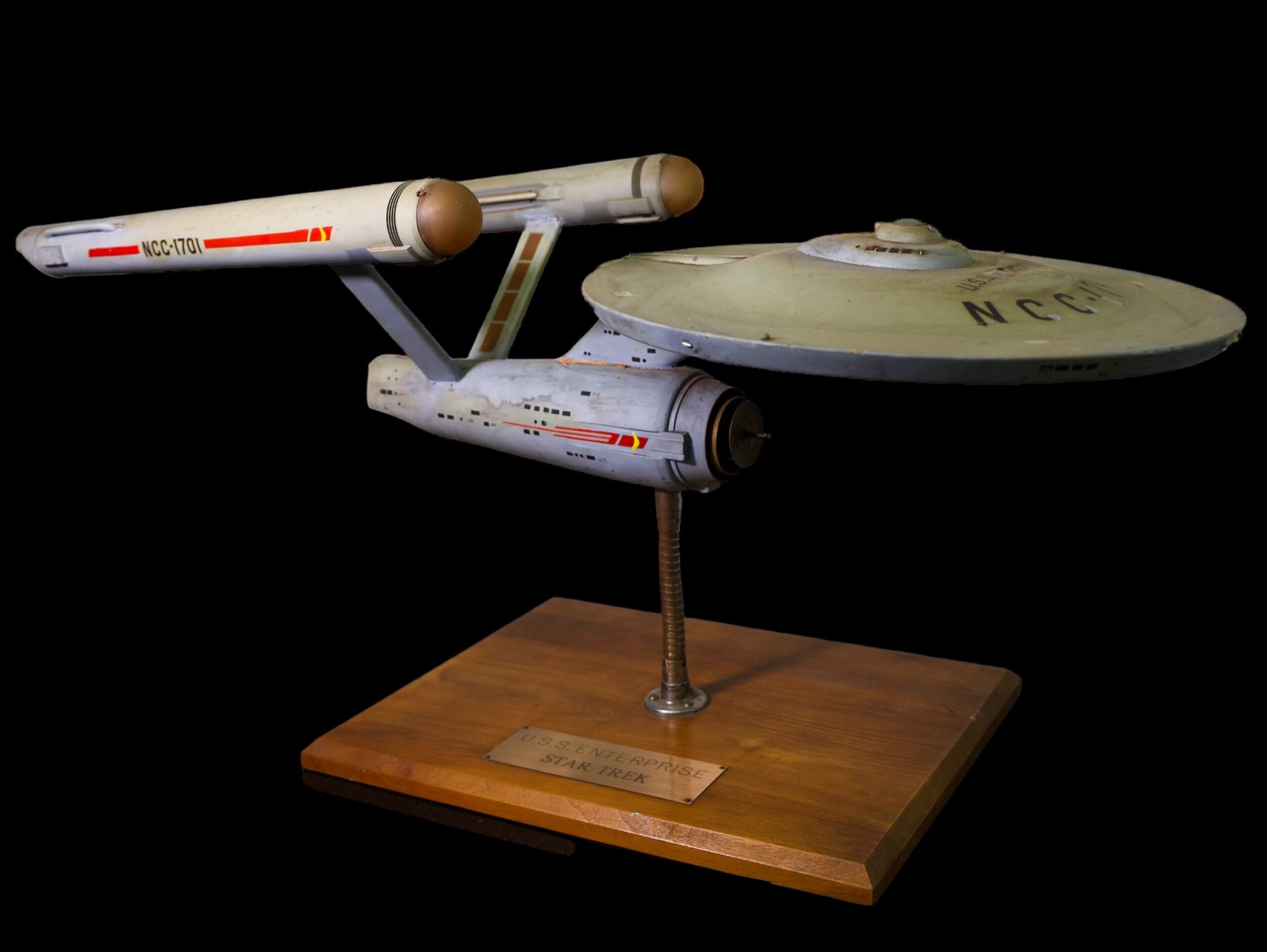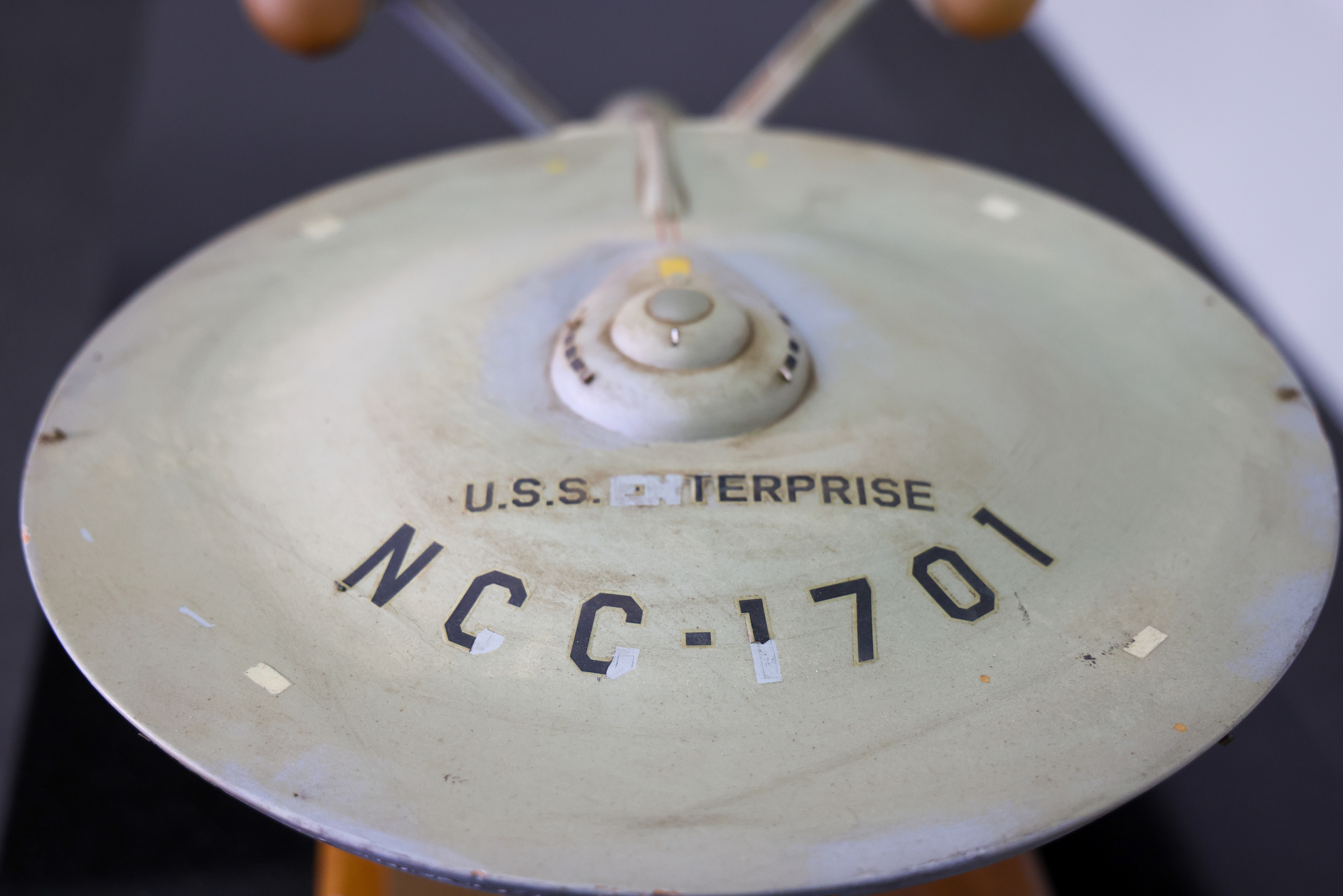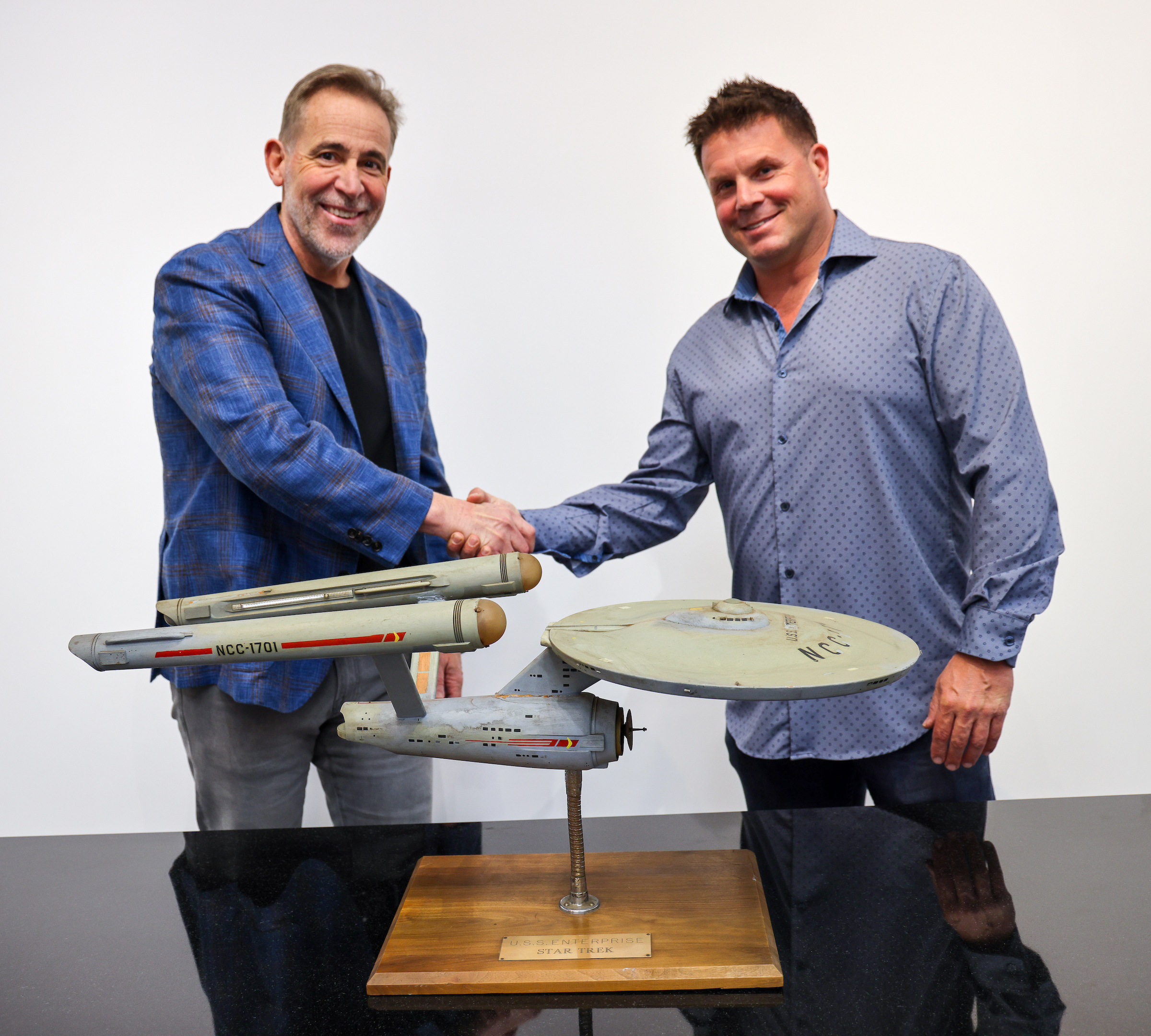The iconic spacecraft from “Star Trek” has finally been beamed up to its rightful place. The original 3-foot-long model of the USS Enterprise, used in the groundbreaking series’ first pilot episode and opening credits, was recently authenticated and returned to the Roddenberry family after decades adrift in the pop culture cosmos.
In a scene fit for a “Star Trek” plot, the seminal starship model was handed off to Eugene “Rod” Roddenberry Jr., son of “Star Trek” creator Gene Roddenberry, at Heritage Auctions’ Beverly Hills location. The momentous occasion marked the end of a 50-year odyssey for the miniature Enterprise, which had been missing since the 1970s.

“Once our team of experts concluded it was the real thing, we contacted Rod because we wanted to get the model back to where it belonged,” says Joe Maddalena, executive vice president at Heritage Auctions, in a media release. “We’re thrilled the Enterprise is finally in dry dock.”
For Rod Roddenberry, the return of the Enterprise model was a deeply personal and emotional event.
“After five decades, I’m thrilled that someone happened upon this historic model of the USS Enterprise. I remember how it used to adorn my dad’s desk,” Roddenberry shared. “I am tremendously grateful to Heritage Auctions for facilitating the return of this iconic piece of ‘Star Trek’ history to my family. I can’t wait to figure out how we are going to share it with my extended family, ‘Star Trek’ fans around the world. We look forward to making that announcement.”
The USS Enterprise’s journey began in the mid-1960s when “Star Trek’s” art director, Walter “Matt” Jefferies, was tasked with designing a ship that would capture the imaginations of viewers and stand the test of time. According to the 1968 book “The Making of Star Trek,” co-written by Stephen Whitefield and Gene Roddenberry, Jefferies aimed to create something “instantly recognizable” that went beyond even the most advanced space scientists’ thinking.

Gene Roddenberry had specific instructions for the starship’s design: “No flames, no fins, no rockets — and make it look like it’s got power.” He wanted the Enterprise to be large enough to carry a crew of several hundred people and insisted that everything be “believable,” forcing Jefferies to base his design “on fairly solid scientific concepts, projected into the future.”
After countless sketches and conceptual renderings, the final design for the NCC-1701 was settled upon, and a prototype was made using balsa wood and cardboard. Custom-scale model-maker Richard Datin Jr. then fabricated a 33-inch wood, hand-painted model that would become an integral part of “Star Trek’s” visual identity.

This model, used in the series’ opening credits and the pilot episode “The Cage,” also served as the prototype for the 11-foot-long starship on display at the Smithsonian’s National Air and Space Museum. However, in the 1970s, the 3-foot model was believed to be lost when Gene Roddenberry loaned it to the makers of “Star Trek: The Motion Picture.”
Fast forward to the fall of 2022, when an individual discovered the long-lost model and brought it to Heritage Auctions for authentication. Once the experts confirmed its authenticity, Heritage reached out to Rod Roddenberry to coordinate the return of the Enterprise to its rightful home.
In the words of the legendary Mr. Spock, the Enterprise has truly “lived long and prospered.” As it embarks on its next chapter, the original USS Enterprise model will continue to inspire generations of fans and serve as a tangible connection to the visionary world created by Gene Roddenberry.
HobbyListings editor Matt Higgins contributed to this report.
